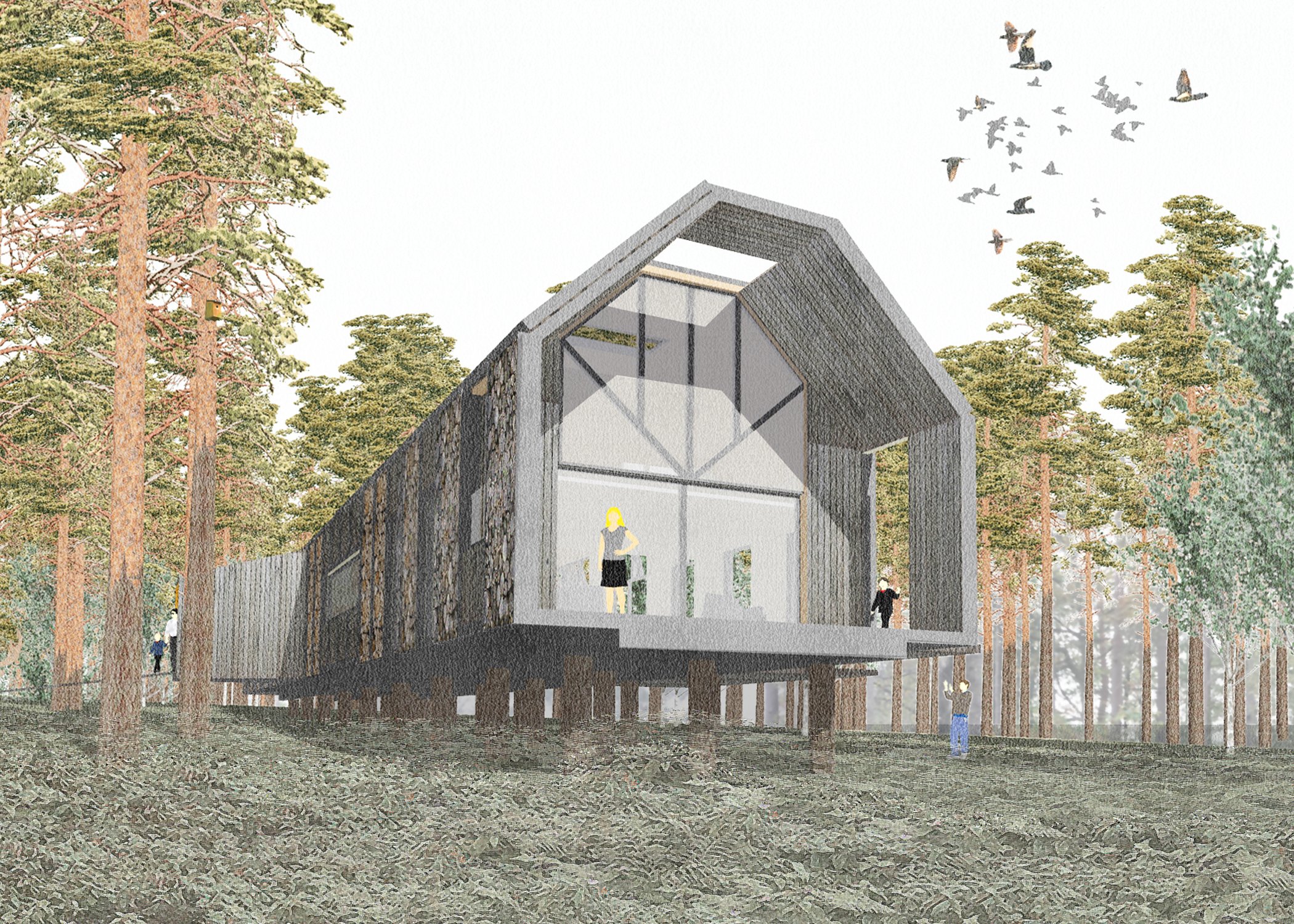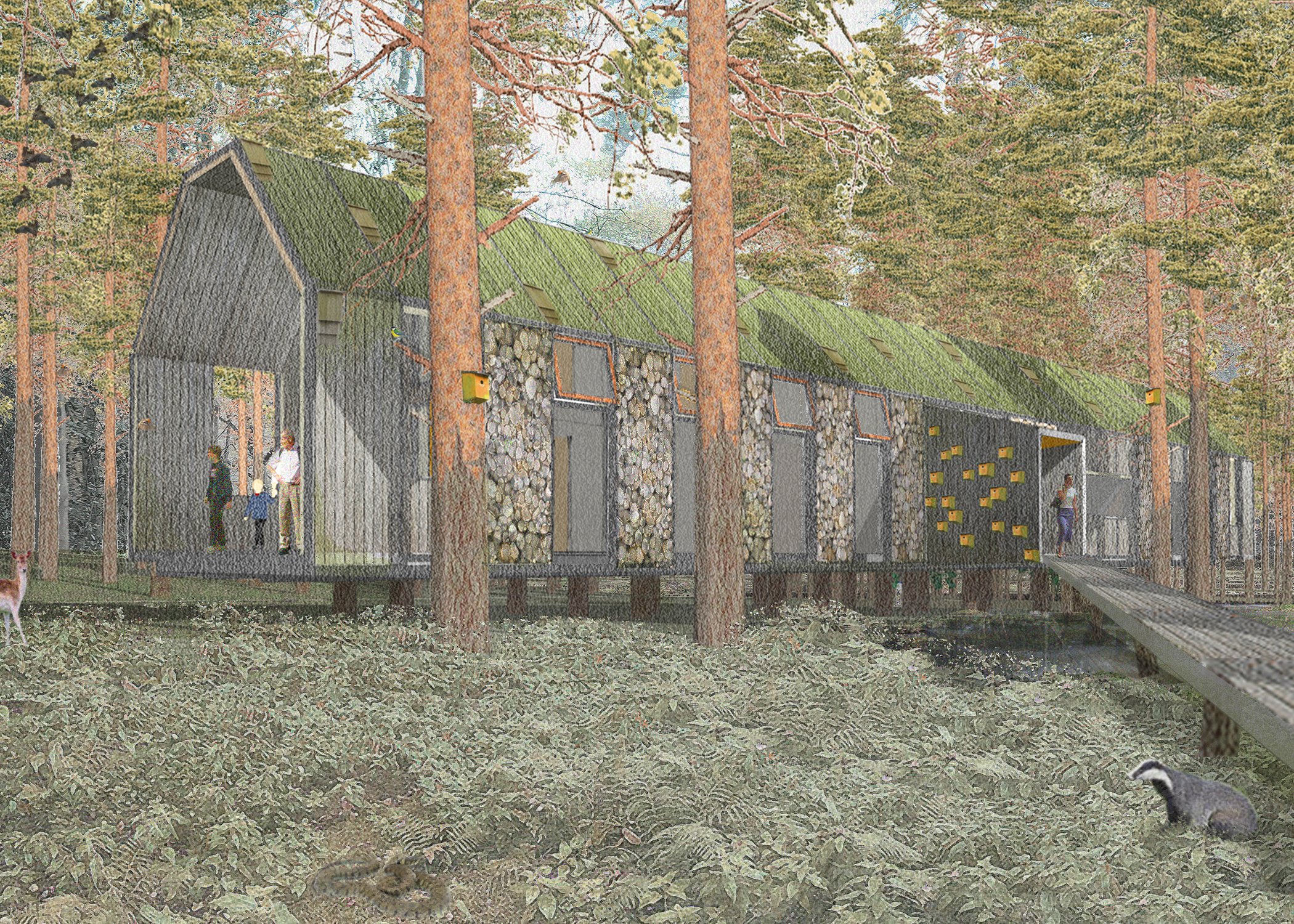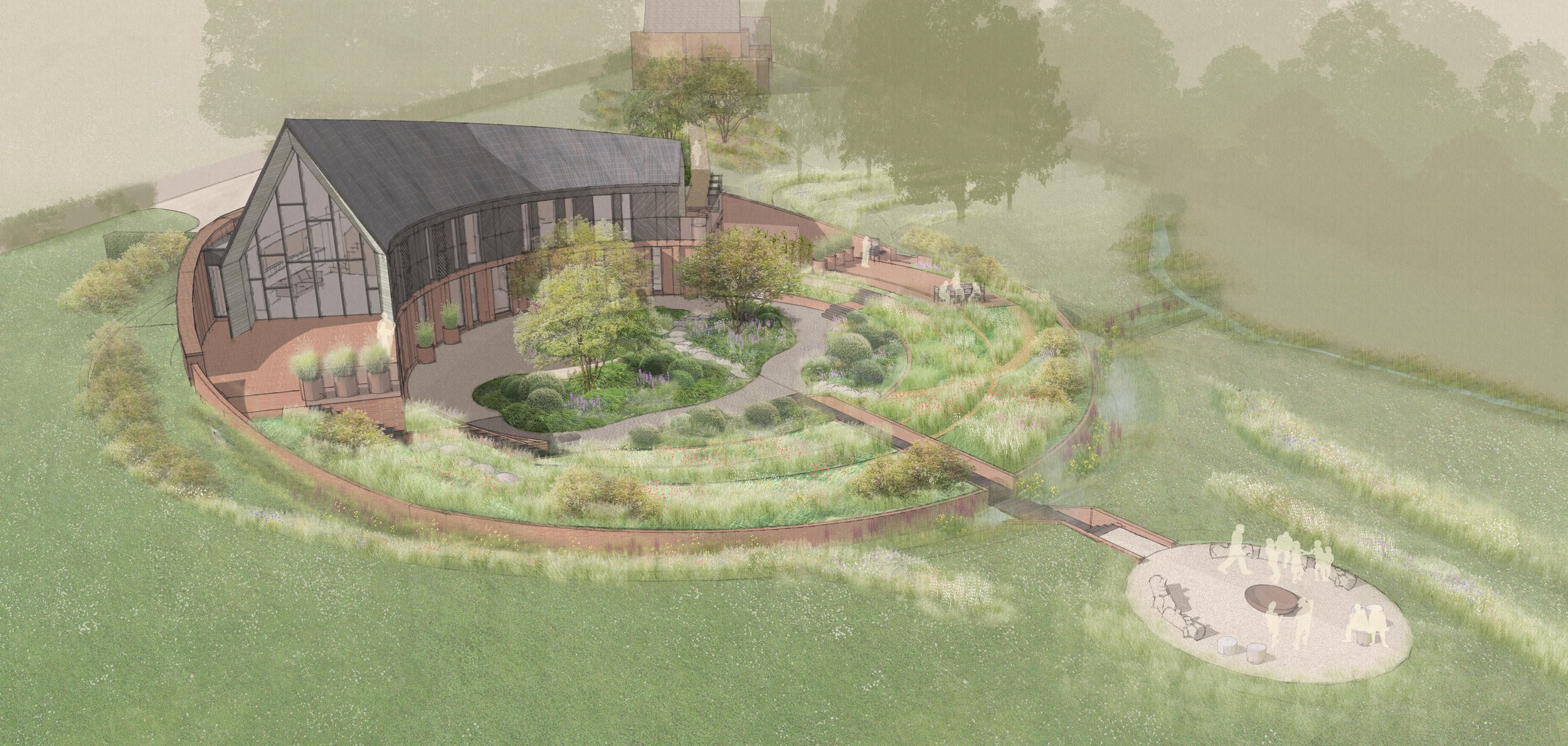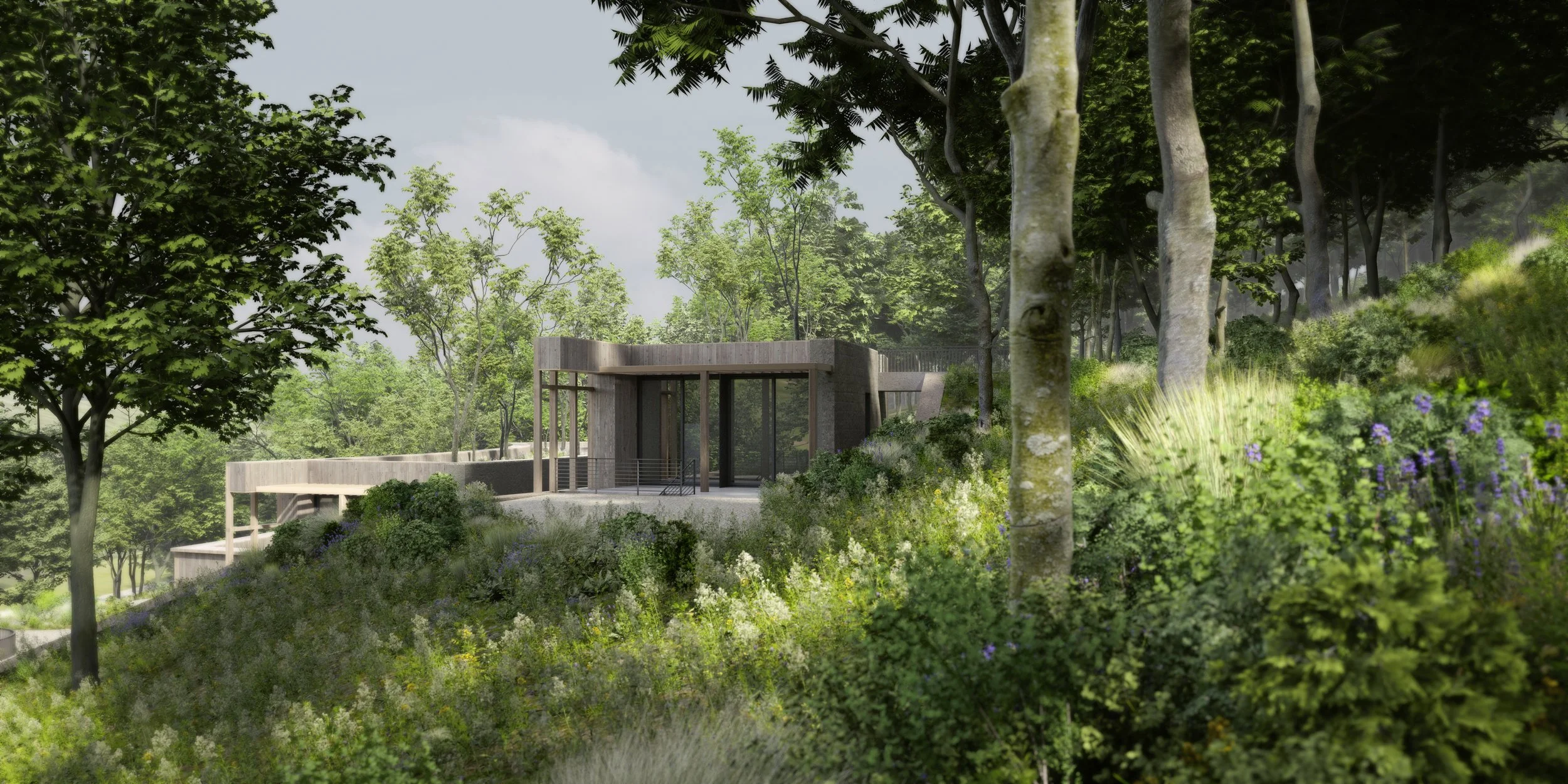Our practice was founded on a successful project which was given a 'one in a million' chance of achieving planning permission. We continue to take on both those odds, and those projects that require an exceptional design approach to achieve an exceptional planning outcome under the current system.
On this page we seek to explain some of the background to the policy, and our approach as a practice. Using our 'ethical compass' as a structure we look at where Paragraph 84 is relevant, why it exists, who undertakes these special projects, how we approach them, and what we design to give our clients the best possible chance to pass this most onerous of planning policy tests.
Our approach to co-designing innovative, unique, and ecological buildings together with our clients has enabled us to gain planning permissions on some of the most challenging sites, including those where Paragraph 84 (formerly 55, 79, 80) was applied successfully.
Let us start with some basics. The 'NPPF' is the National Planning Policy Framework, which sets out the government’s planning policies for England and how these are expected to be applied by Local Planning Authorities (LPA's).
As a practice, we often begin by explaining to clients that almost the entire thrust of the document is to steer LPA decision makers towards sustainable forms of development. This tends to try and focus new buildings within existing towns, cities and villages; so long as a site falls within an agreed and accepted settlement or development boundary. In some cases, a site might be within a village, but one which doesn't have such a boundary – this means that, in policy terms, it falls in open countryside and therefore different policies apply.
Much of this general approach is to minimise the amount of travel required in cars, but secondly it is to avoid spreading development across the countryside (which is considered by many on our small island to be absolutely sacrosanct). Development within our countryside, greenbelt and areas of outstanding natural beauty and national parks is understandably an emotive discussion, and causes great consternation to many people.
Paragraph 84 can become relevant to any site which falls outside of a recognised settlement boundary, at which point it becomes considered 'Open Countryside' under planning policy.
where does Paragraph 84 apply?
In theory, anyone can develop a proposal for a truly outstanding home. We have supported several Paragraph 84 projects, and they have succeeded when driven by highly focussed, very dedicated, and patient clients. They have been willing to go on a journey, and been able to invest not inconsiderable sums of money at risk to try and achieve their ultimate goal of building a truly outstanding new home.
At Barefoot Architects, we recognise that not everyone can take such large financial risks to undertake a project of this nature; but we have worked with self-build clients, and families who are committed to doing something exceptional to develop special projects and who have committed great energy and resources to their projects.
Here are our 4 P's of Who Builds a Para 84 House:
Passionate: You need to love the site, love the idea, and love the journey.
Persuasive: You need to be able to communicate your vision to everyone who involved in the process so that they believe in it too. Authenticity is everything.
Prepared: You need to understand that this journey is going to take time, and require adequate resources of energy, time and money.
Perseverance: You need to stop at nothing, be resilient to setbacks and changes, and to keep going when the going gets tough.
who builds Paragraph 84 Homes?
If you are passionate, persuasive, prepared to persevere and be patient to win against the odds and achieve a Paragraph 84 project then they can be incredible, life defining journeys that transform the way you live.

We were appointed by a family living near this site in West Sussex to develop plans for a spectacular woodland house to meet the stringent planning requirements of the ‘Country House’ Paragraph 84 clause.

The design seeks to demonstrate an exceptional approach to design on the wooded site through a layered approach.

Internally the house provides flexible family living spaces, seeking to expand and contract to suit the clients needs over time.

Internally the house provides flexible family living spaces, seeking to expand and contract to suit the clients needs over time.
how do we approach a Paragraph 84 project?
Our approach to these projects is to gather the right team and work in the right way with them to produce a thorough and compelling design approach. We can then take this to the LPA and Design Review Panels at appropriate stages, mitigating cost at risk to our clients and giving the project the best possible chances of success.
1
All great projects start with several great ingredients. We've covered what it takes to be a great client, and so the next important step is a great site.
A great site in the countryside can have many qualities that in turn can lead to a great story. Consideration and research of the geology, archaeology, soil, local heritage, history, microclimate, orientation, ecology, views and local vernacular are all opportunities to develop a unique, compelling and captivating story for a project. Each of these areas will most likely require specialist consultant input at some stage to help inform a design approach which resonates deeply to its particular site and setting.
3
Each facet of the project should be developed to explain how it does indeed reflect the highest standards in architecture, and helps to 'raise standards of design more generally in rural areas' as an exemplar to be referred to.
In order to significantly enhance its immediate setting, a design approach must demonstrate how its visual appearance, and impact on the landscape, has been very carefully considered, as well as the approach to nature, ecology and the environment. Working to recognised metrics and standards, the proposal should seek to show how a site will actually be improved. Providing a net gain ecologically is clearly one component of this, as well as showing that the project itself is revealing something more about the unique place within which it is located.
want to start a paragraph 84 project?
take the first step with barefoot architects.
If you have the site, time and inclination to develop an exceptional project under Paragraph 80, then we would be excited to have a conversation with you in the first instance.
Beyond a call, we offer a specific Paragraph 84 Site Appraisal Service (SAS). It is based on our successful Initial Design Consultation, and develops the level of rigour we take in respect of searches, policy checks and initial concept ideas in response to a place.
Meeting together on site allows us the opportunity to really get to know one another, explore the site, immediate setting and surrounding landscape. Spending time together walking, talking, drawing and thinking allows us the opportunity to test initial reactions and responses collaboratively with you.
Following the site visit, we provide a comprehensive summary report that outlines our proposed approach to the process, our initial ideas documented in a series of sketches, and our fees to progress the project through the different steps to planning.
2
Rooting a project in its place helps to drive a narrative or story for a project which is relatable to others, including Design Review Panels, Local Planning Authorities and other key stakeholders.
Landing an architectural 'spaceship' in a field is rarely a popular design move, and not something which we would advocate! Objectively demonstrating that a design is “truly outstanding” requires developing a significant evidence base from a range of specialists in order to persuade a Design Review Panel, and ultimately a Local Planning Authority, that the approach is worthy of this statement.












